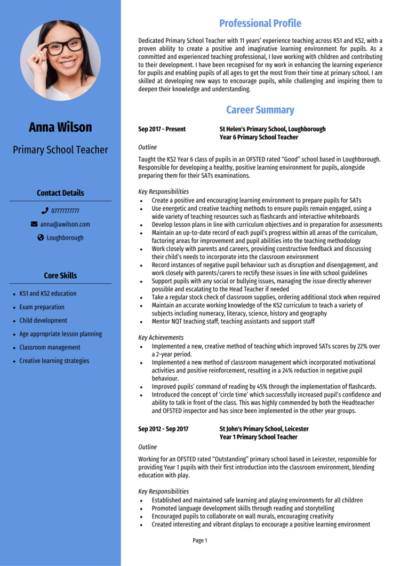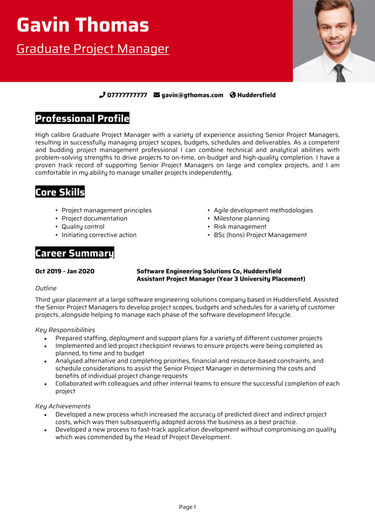As you know, being a primary school teacher is about so much more than following a lesson plan. You shape young minds, build confidence, and somehow manage to keep 30 energetic children engaged (most of the time).
A quality CV is the first step in proving you’ve got what it takes. This guide, alongside 4 perfect Primary School Teacher CV examples, will show you how to highlight your teaching expertise, classroom management skills, and passion for education in a way that gets you noticed by hiring managers.
Primary School Teacher CV
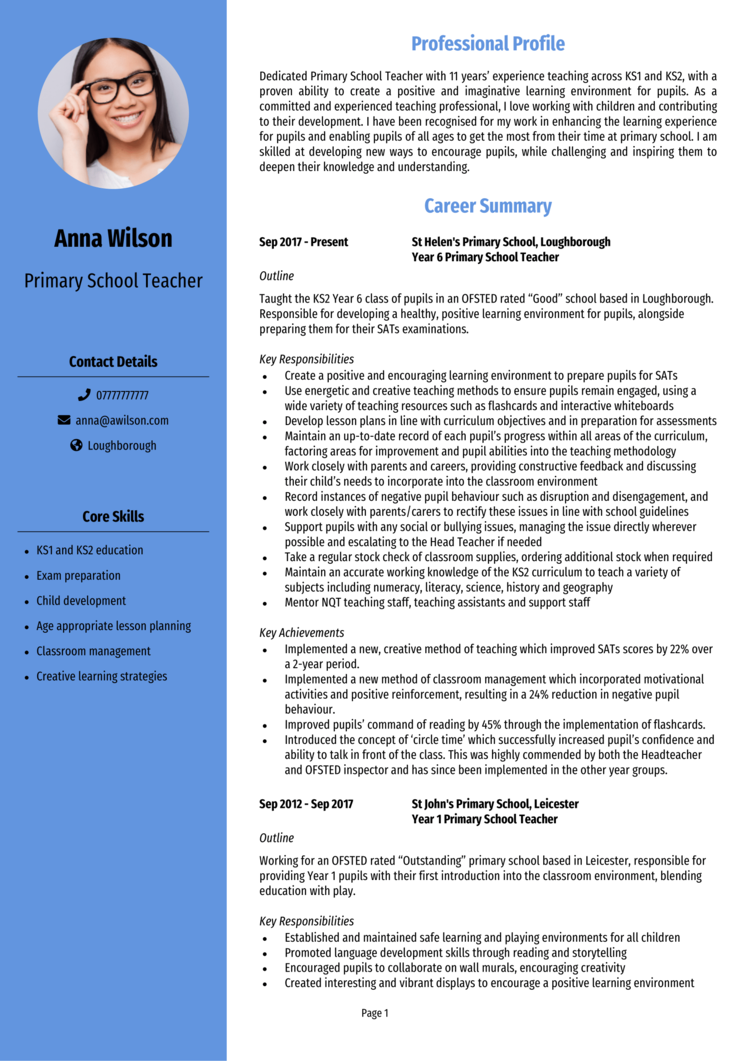
Supply Teacher CV
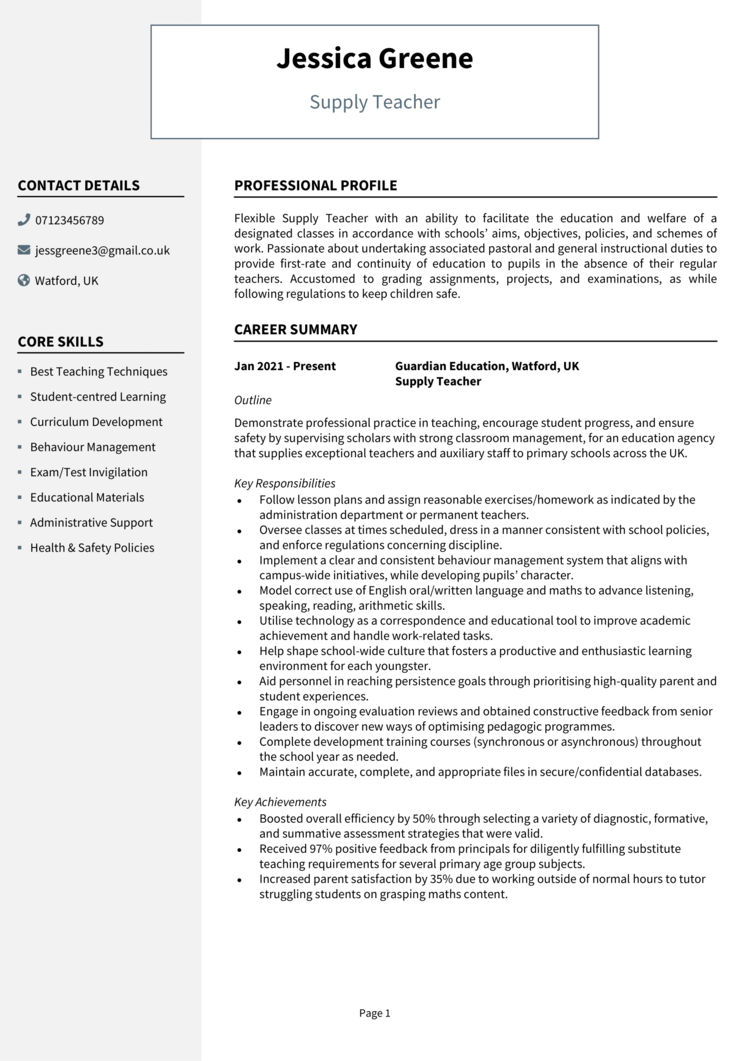
SEN Teacher CV

Trainee Teacher CV
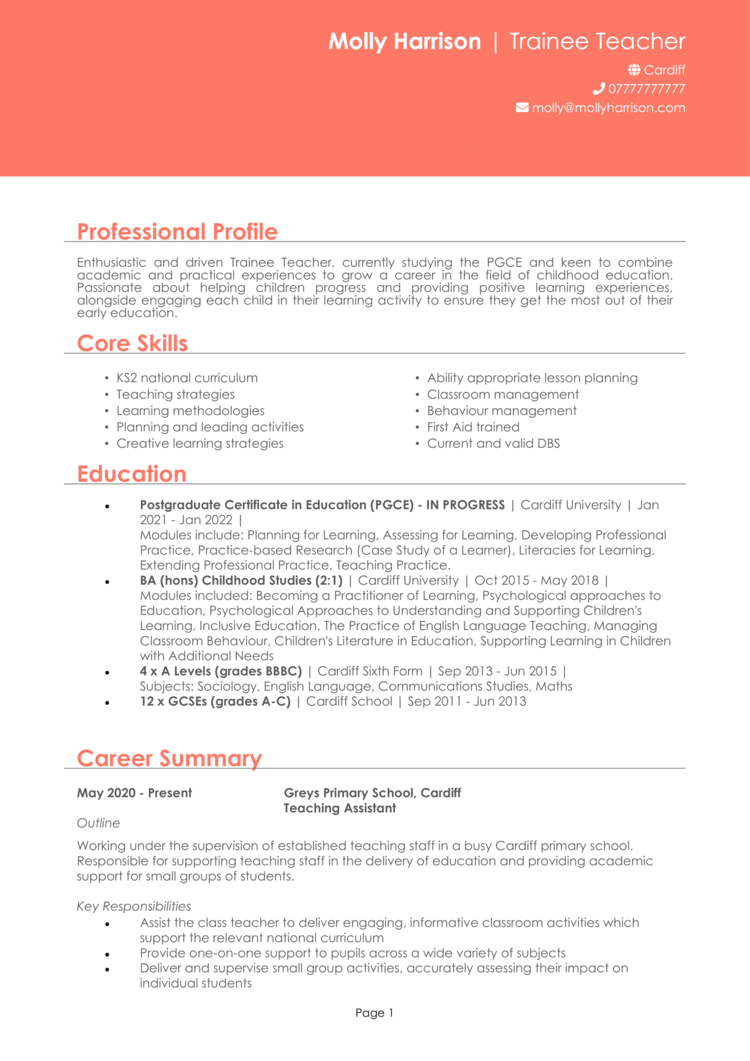
How to write your Primary School Teacher CV
Learn how to create your own interview-winning Primary School Teacher CV with this simple step-by-step guide.
To help you craft an application that truly reflects your skills, this guide will break down exactly what a perfect CV should include. From structuring your experience to showcasing your strengths as an educator, this guide will ensure you’re writing a CV that’s as engaging and effective as the lessons you teach.
How to structure your Primary School Teacher CV

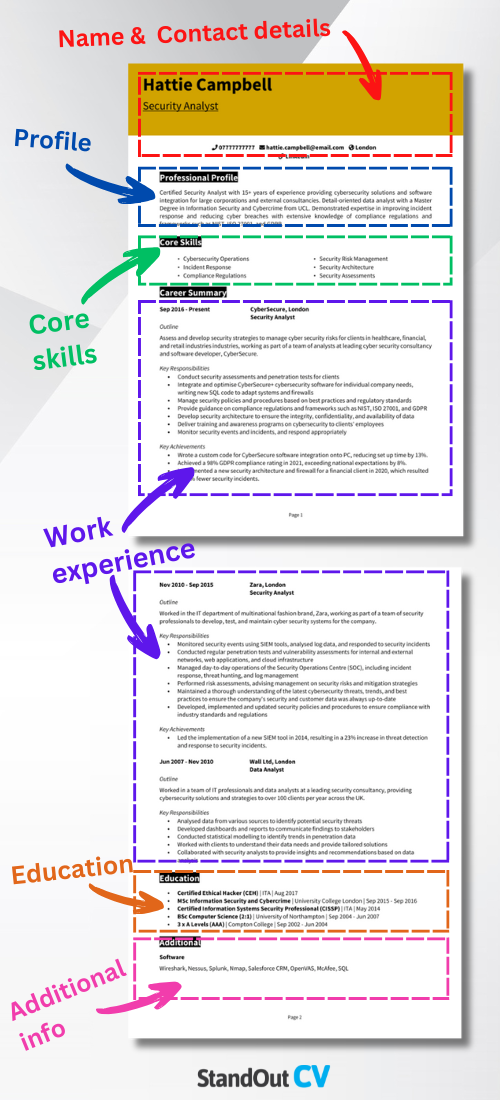
Hiring managers don’t have time to search for key information – they need to see at a glance that you have the right skills and experience for the role. A well-structured CV, with a layout that’s nice and easy to navigate, makes that easy.
Here’s how to organise your CV structure:
- Name and contact details – Keep your personal details and an optional photo at the top so schools can easily reach you.
- Profile – Kick off with a strong summary that highlights your teaching experience, key strengths, and educational philosophy.
- Core skills – Provide a snapshot of your most relevant abilities, such as lesson planning, safeguarding, and classroom management.
- Work experience – Detail your teaching roles in reverse chronological order, showcasing your impact in each position.
- Education – Walk the recruiter through your teaching qualifications, degrees, and relevant training, starting with the most recent.
- Additional info – Optionally, mention relevant hobbies, awards, or extracurricular contributions.
Primary School Teacher CV format
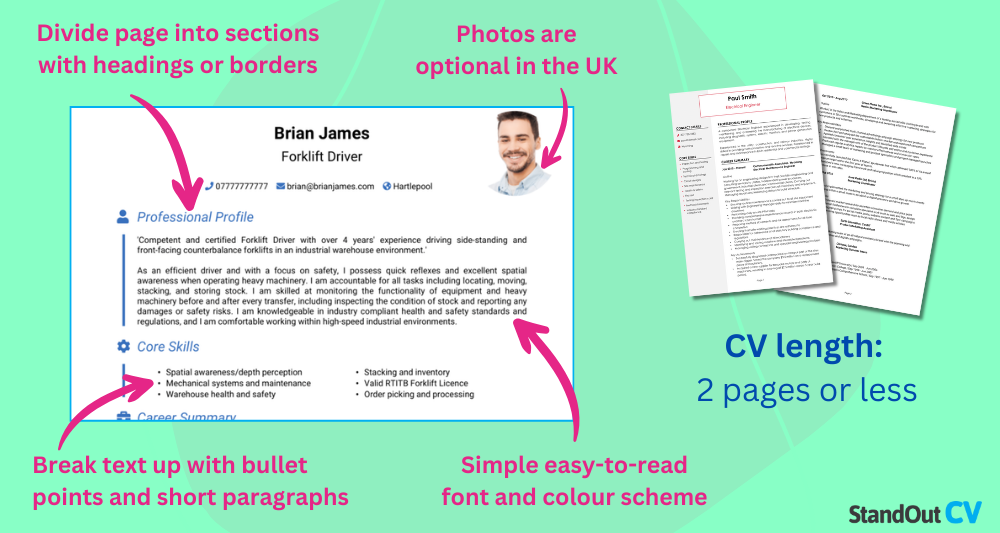

A teacher’s CV format should be as well-presented and easy to follow as a good lesson plan. If it’s messy or difficult to read, hiring managers may assume the same about your classroom: so don’t let simple formatting mistakes cost you teaching opportunities.
Follow these formatting tips:
- Bullet points – Keep your responsibilities and achievements clear and concise.
- Divide sections – Structure your CV logically to make it easy to navigate.
- Use a clear and readable font – Stick to a professional, legible font for a polished look.
- No more than 2 pages – This is plenty long enough to cover everything you need to, without boring or overwhelming recruiters.
Primary School Teacher CV profile
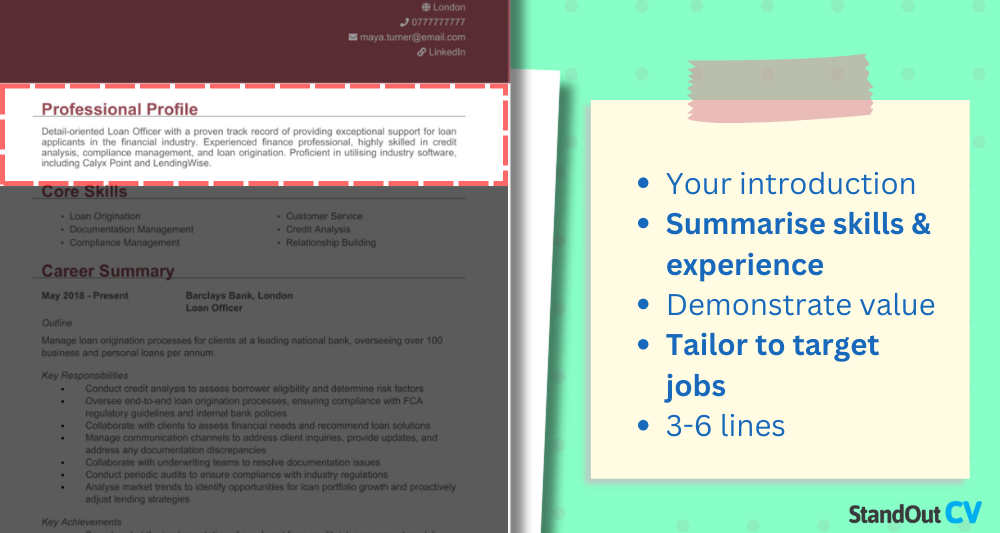
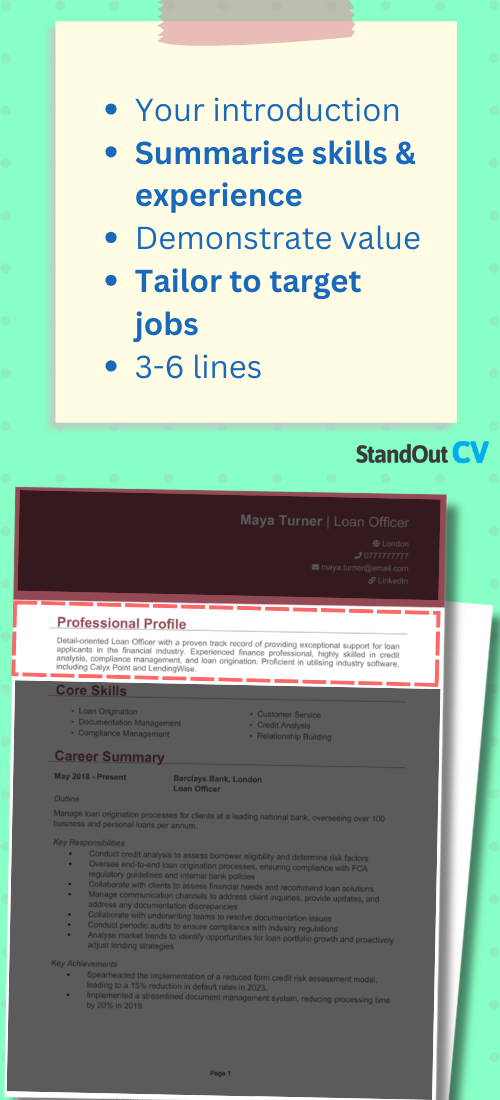
A great teacher knows how to capture attention from the very first moment – your CV should do the same. Your CV profile is a short introduction which should summarise your teaching experience, approach, and key strengths, with the ultimate aim of convincing schools that hiring you would benefit them.
Primary School Teacher CV profile examples
Profile 1
Dedicated Primary School Teacher with five years of experience fostering a supportive and engaging learning environment for early years and Key Stage 1 students. Skilled in lesson planning, classroom management, and differentiated instruction to accommodate diverse learning styles. Experienced in using interactive teaching tools and assessments to track student progress and enhance engagement. Passionate about nurturing young minds and promoting a love for learning.
Profile 2
Enthusiastic Primary School Teacher with three years of experience teaching Key Stage 2, specialising in literacy, numeracy, and creative learning strategies. Adept at integrating technology into lessons, managing classroom behaviour effectively, and collaborating with parents to support student development. Committed to creating an inclusive and stimulating classroom environment that fosters curiosity and confidence.
Profile 3
Experienced Primary School Teacher with over seven years of expertise in early childhood education, focusing on phonics, social-emotional development, and hands-on learning. Skilled in implementing national curriculum standards while adapting teaching approaches to meet individual student needs. Passionate about inspiring young learners through interactive and engaging lessons that build a strong educational foundation.
What to include in your Primary School Teacher CV profile
To make an impact, include:
- Your teaching experience – Whether you’ve taught in EYFS, KS1, or KS2, make it clear.
- Your teaching philosophy – Highlight your approach to learning, engagement, or child development.
- Curriculum expertise – Schools want to see that you can deliver lessons in line with national standards.
- Classroom management skills – Demonstrating your ability to maintain order and engagement is key.
- Additional contributions – If you’ve led extracurricular activities or pastoral support, mention it here.
Core skills section
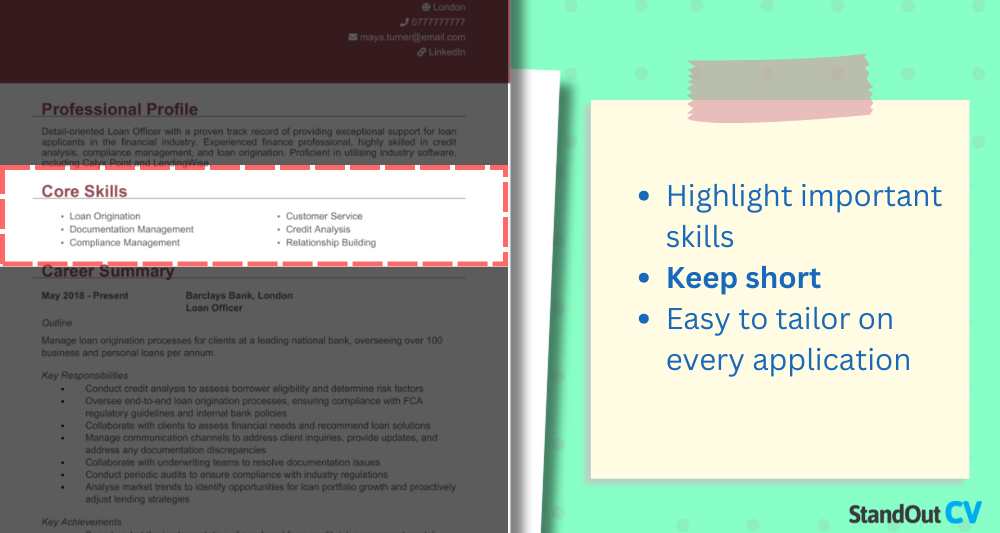

A core skills section gives schools a quick way to assess whether you’re a good fit for their teaching environment. Since primary school teachers need a mix of educational expertise, classroom management, and pastoral care skills, this section should reflect a broad skill set.
Make sure the skills listed align with the job description and the specific needs of the school. Tailoring your CV skills section will make your application stand out.
Most valuable skills for a Primary School Teacher CV
- Lesson Planning – Designing structured and engaging lesson plans aligned with curriculum standards.
- Classroom Management – Implementing strategies to maintain a positive and disciplined learning environment.
- Child Development Knowledge – Understanding cognitive, emotional, and social development to tailor teaching approaches.
- Differentiated Instruction – Adapting teaching methods to accommodate diverse learning needs and abilities.
- Early Literacy and Numeracy – Teaching foundational reading, writing, and maths skills to support academic growth.
- Behavioural Guidance – Managing student behaviour through positive reinforcement and conflict resolution strategies.
- Assessment and Progress Tracking – Evaluating student performance through tests, assignments, and informal observations.
- Creative and Interactive Teaching – Using hands-on activities, storytelling, and play-based learning to engage young learners.
- Parental Communication – Collaborating with parents and guardians to support student development and address concerns.
- Safeguarding and Child Protection – Ensuring student safety and well-being by adhering to safeguarding policies and procedures.
Writing about your work experience
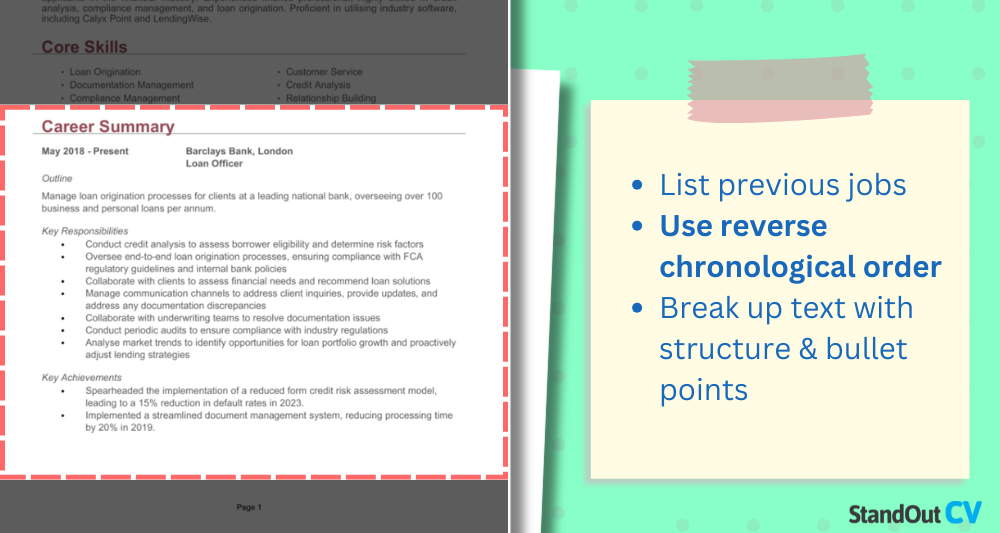
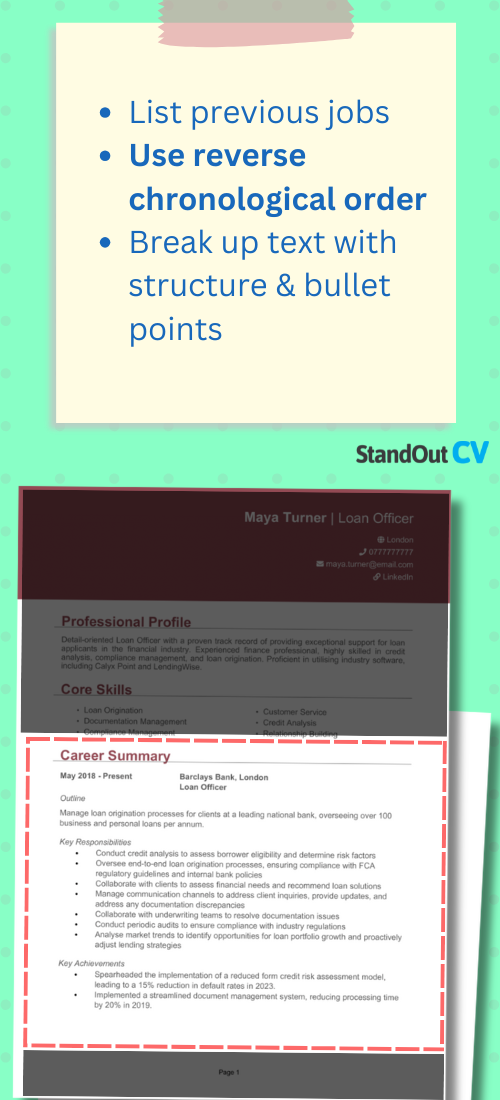
Your work experience should demonstrate your impact as a teacher, not just your job title. Schools want to see how you’ve engaged students, supported their progress, and contributed to the wider school community.
List your roles in reverse chronological order, focusing on your responsibilities, teaching methods, and student outcomes. If you’ve worked with special educational needs (SEN) students, implemented new teaching strategies, or played a role in school events, highlight those achievements.
How to structure jobs
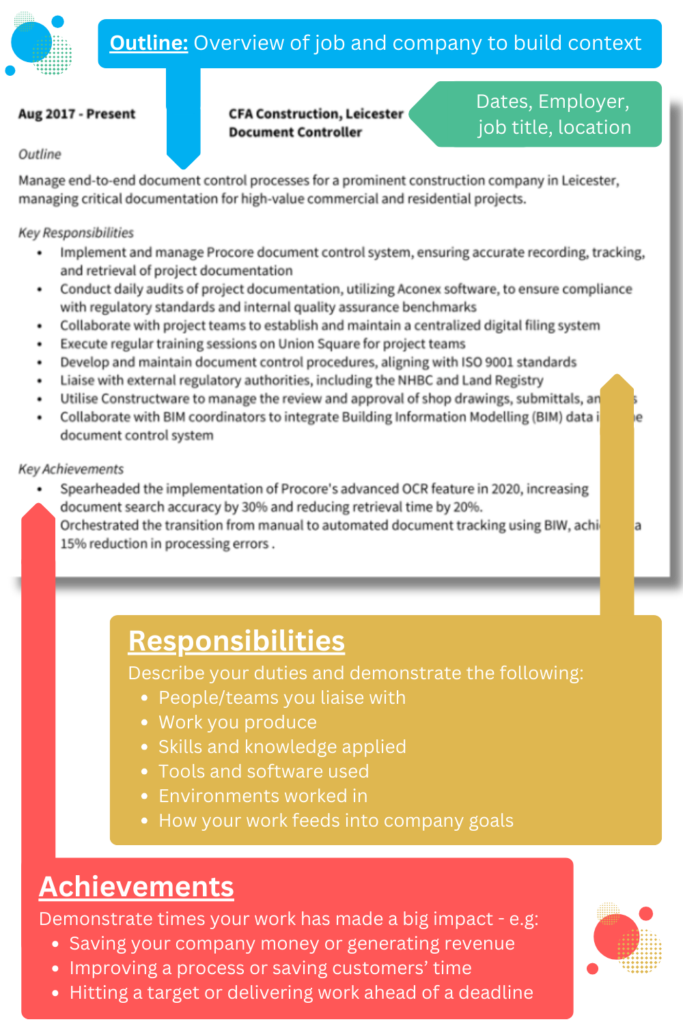
- Outline – Introduce the school, the year groups you taught, and any key responsibilities.
- Responsibilities – List your core teaching duties, such as lesson planning, assessment, and classroom management. Use action verbs like “delivered”, “developed”, and “implemented”.
- Achievements – Highlight measurable impact, such as improved student progress, successful Ofsted inspections, or the introduction of new learning techniques.
Example job entries for a Primary School Teacher CV
Primary School Teacher | Oakwood Academy
Outline
Planned and delivered engaging lessons for Key Stage 1 students, fostering a dynamic and inclusive classroom environment.
Responsibilities
- Developed lesson plans aligned with the national curriculum, ensuring engaging and age-appropriate learning experiences.
- Incorporated interactive activities, storytelling, and hands-on projects to enhance student engagement.
- Assessed student progress through formal and informal assessments, providing tailored support where needed.
- Managed classroom behaviour effectively, promoting a positive and respectful learning atmosphere.
- Worked closely with parents and support staff to address individual student needs and development goals.
Achievements
- Increased student reading proficiency by 20 percent through targeted phonics instruction.
- Implemented a classroom reward system that improved student motivation and participation.
- Recognised by senior leadership for outstanding lesson delivery and student engagement.
Teacher | Greenfield Primary School
Outline
Taught Key Stage 2 students, focusing on core subjects and developing well-rounded educational experiences to enhance learning outcomes.
Responsibilities
- Designed and implemented engaging lesson plans in literacy, numeracy, science, and social studies.
- Used differentiated instruction to cater to students with varying abilities and learning needs.
- Incorporated technology and digital resources to create interactive and stimulating lessons.
- Organised extracurricular activities and school events to promote student creativity and social development.
- Collaborated with colleagues to develop cross-curricular projects and enrich the learning experience.
Achievements
- Improved class maths scores by 25 percent through personalised learning strategies.
- Led a school-wide reading initiative that boosted student literacy engagement.
- Received positive feedback from parents for strong communication and student progress tracking.
Primary School Teacher | St Peter Academy
Outline
Provided engaging and structured education to early years students, fostering social, emotional, and cognitive development.
Responsibilities
- Created a nurturing and supportive classroom environment to help young learners develop foundational skills.
- Implemented phonics-based reading programmes to improve literacy in early years students.
- Used play-based learning techniques to develop motor skills, creativity, and problem-solving abilities.
- Monitored student development and provided early intervention for those requiring additional support.
- Communicated regularly with parents and guardians to support children’s progress at home.
Achievements
- Increased early reading fluency by 30 percent through structured phonics instruction.
- Organised a classroom environment that improved student focus and engagement.
- Awarded ‘Teacher of the Term’ for innovative lesson planning and student progress.
How to write your education section
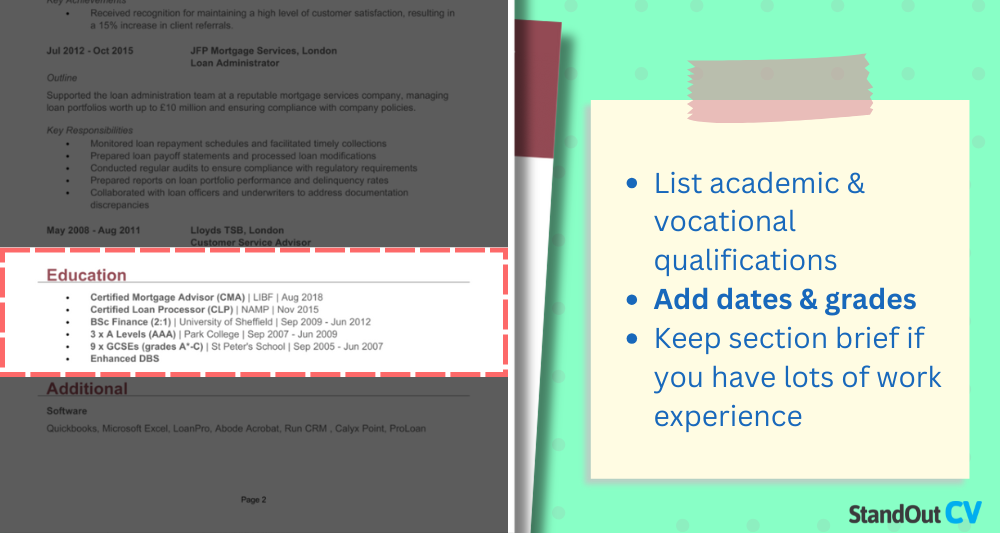

Your education and qualifications are essential in a teaching CV. Schools want to see the specialist certifications that qualify you to work in primary education, as well as any additional training in areas like SEN support, safeguarding, or leadership.
List qualifications in reverse chronological order, starting with the most recent. If you’ve completed additional professional development courses, mention those here too.
Best qualifications for Primary School Teachers
- PGCE (Postgraduate Certificate in Education) – The standard route into teaching for graduates.
- Bachelor of Education (BEd) – A specialist degree in teaching, often including QTS.
- Qualified Teacher Status (QTS) – Essential for teaching in most UK schools.
- NPQ (National Professional Qualification in Middle Leadership or Senior Leadership) – Useful for teachers progressing into leadership roles.
- SENCO or Special Educational Needs Training – Beneficial if you work with students with additional learning needs.


